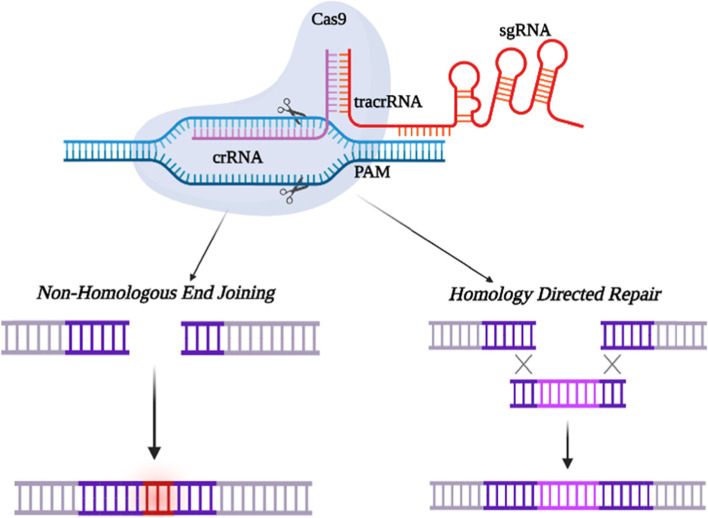Fig. 3.
Represents the mechanism of CRISPR/Cas9: The CRISPR/Cas9 system consists of three components: an endonuclease (Cas9), a CRISPR RNA (crRNA), and a transactivating crRNA (tracrRNA). The guide RNA (gRNA) is a duplex structure formed by the crRNA and tracrRNA molecules. The sgRNA comprises a unique 20-base-pair (bp) sequence that is meant to complement the target DNA site, and this must be followed by a short DNA sequence known as PAM, which is required for Cas9 protein compatibility. Cas9 nuclease is guided by sgRNA which causes Double Strand Breaks (DSB) around the PAM. Non-Homologous End Joining (NHEJ) or Homology Directed Repair (HDR) are the two routes through which the DNA repair machinery is activated to repair DSBs

